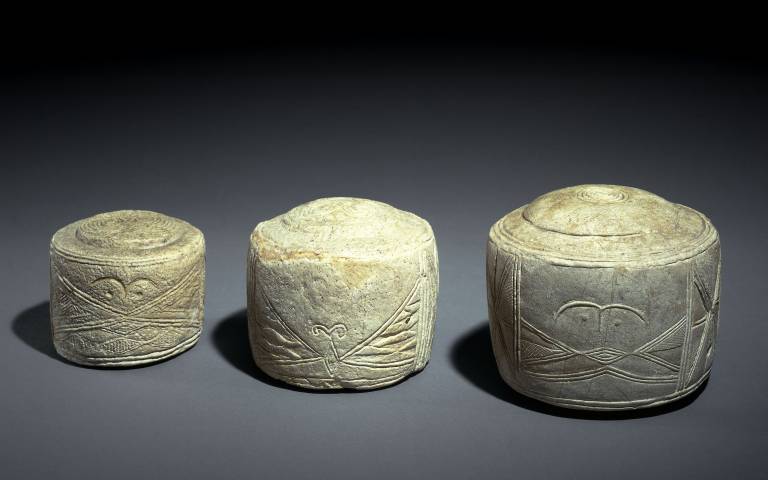Folkton Drums could have been measuring devices used to build Stonehenge
21 December 2018
A unique set of chalk cylinders known as the Folkton Drums could have been designed as prehistoric ‘tape measures’ and used in the construction of monuments such as Stonehenge, according to a new study by UCL and University of Manchester.

The Folkton Drums are around 5000 years old and were found at ancient archaeological sites in Britain but until recently the function of these artefacts was completely unknown.
Professor Mike Parker Pearson (UCL Institute of Archaeology), said: “For almost 150 years the Folkton Drums have been viewed as beautiful yet unfathomable artefacts. A new understanding that their size and design elements may, in fact, have applications to monument construction has intriguing implications for our knowledge of Neolithic society.”
The study, published in the British Journal for the History of Mathematics, has shown that by winding a cord a fixed number of times around each of the drums, a standard unit of length can be obtained.
This unit of length appears to have been used in the construction of large stone and timber circles including Stonehenge and Durrington Walls in Wiltshire.
The measuring drums are rare and enigmatic objects that were carved from blocks of solid chalk by people living in early farming communities in Britain during the Neolithic period up to 5000 years ago.
Three of the chalk drums were discovered in 1889 near the village of Folkton in Yorkshire, while a fourth was discovered more than a century later near Lavant in West Sussex. The drums appear to have been created in a carefully graduated series of sizes so that the circumference of each drum can be used to measure out a fixed proportion of a standard length of 3.22 metres. A cord of this length wraps exactly ten times round the circumference of the smallest drum and exactly nine, eight or seven times around each of the sequence of larger drums.
Previous studies have shown that multiples of the standard measure of 3.22 metres were used to lay out the diameters of large circular earthworks and their stone and timber circles at Stonehenge and Durrington Walls. Together with the new evidence from Yorkshire and Sussex, this indicates that a prehistoric standard of measurement was in widespread use in ancient Britain.
The regular layout of large, complex ritual monuments such as Stonehenge implies that the construction site was surveyed carefully and the required dimensions of large stones could be transferred to stone quarry sites located up to 260 kilometres (160 miles) away.
Measuring cylinders would have provided an accurate and highly portable method for ensuring that the quarried stones were of the correct size and for ensuring that monuments of similar design could be built at widely separated locations.
Professor Andrew Chamberlain (University of Manchester), said: “Chalk is not the most suitable material for manufacturing measuring equipment and it is thought that the drums may be replicas of original ‘working’ standards carved out of wood. However, wood is not preserved on most Neolithic archaeological sites and no wooden measuring devices have been found in prehistoric Britain. The existence of these measuring devices therefore implies an advanced knowledge in prehistoric Britain of geometry and of the mathematical properties of circles.”
Dr Anne Teather (University of Manchester) said: “These findings show how important it is to continue to research artefacts in museum collections, and the value in collaborative research for understanding prehistory.”
Professor Parker Pearson, concluded: “The Folkton Drums were found in the grave of a child, so does this mean that standard measures were somehow associated with children, or growth, or the human life-cycle including learning and the inter-generational transmission of knowledge? These items were almost certainly prestigious although how, or to what extent they held social power, is unknown. This work opens up the field of material culture studies to exciting new possibilities.”
Links
Image
- Folkton Drums, copyright: Trustees of the British Museum
Media contact
Natasha Downes
tel: +44 20 3108 3844
E: n.downes [at] ucl.ac.uk
 Close
Close

